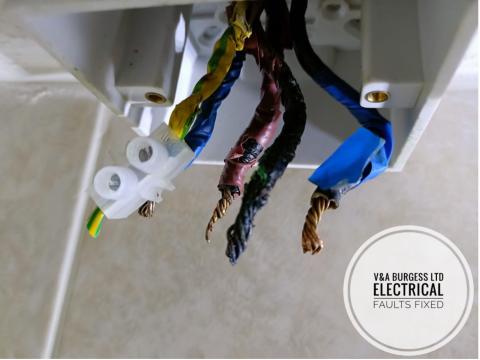
🔥Quite simply, heat causes a plug to melt.
How is the heat generated? Well then. That’s another matter.
Heat is generated in an electrical system when there is a combination of a few factors. Excessive electrical current flowing in a circuit that is not designed for that level of current will cause excessive heat. A circuit that is continually overloaded will suffer from excessive heat.
Heat can also be generated when there are high resistances such as those found in aging electrical accessories like plug sockets and electrical switches. Loose wiring in the terminals behind the socket can also cause a high resistance and therefore HEAT.
Electrical sockets actually have a few moving parts inside them. When these parts have seen a lot of use they can often begin to wear and stop making great contact like when new. Dirt can also accumulate on the contact within the internals of the electrical sockets and switches and cause poor contact.
Poor electrical contact creates a high electrical resistance which is one of the causes of excessive heat in a circuit. Very quickly there are lots of reasons why a plug socket can melt.
🔌What about a plug?
Well, a plug can also melt through poor contacts, high resistance and excessive load being drawn through the plug. Inside a plug there are screw terminals that hold the cable in place. These are flawed in some ways as they rely on the terminals staying tight forever which won’t happen. They rely on the cables being able to withstand the tightening of a screw onto fine stranded copper wire and screws can damage copper wire especially over time. The plug also relies on the fuse carrier holding the fuse tight enough to make good electrical contact.
There is a lot to go wrong when we actually dive into it and break it down isn’t there?
🚩Lots of problems together
Let us imagine for a moment that a badly wired plug with a loose fuse carrier is plugged into a socket that is aging, has loose connections at the back and dirt on the contacts inside. The appliance that we have plugged in is a fan heater as its winter and its cold…… for example.
We are asking for a lot of power when we switch an electrical fan heater on and therein begins the problem. All the potential issues mentioned above have the opportunity to work together to cause a burnt electrical outlet, melted plug and potentially dangerous situation in the home.
☑️What can be done?
If your homes electrical system has not had an electrical inspection carried out in the last 10 years then it is time to have one done. If the electrical sockets and switches in your home are really old then it is worthwhile having them swapped for new accessories. An electrical report will highlight any potential issues in more depth.
If you notice an electrical outlet is burnt then please do not use it. Have it checked and replaced by an electrician. If the outlet has been burnt out before then the reason for this needs to be investigated. It is quite possible to overload a plug top on an extension lead for example and cause melting and burning.
There is a useful overload calculator on our website that you may want to take a look at. Don’t forget, we are here to help. If you need any assistance with anything electrical then get in touch using our contact form.
Our contact info:
📧 Fill in our contact form here.










